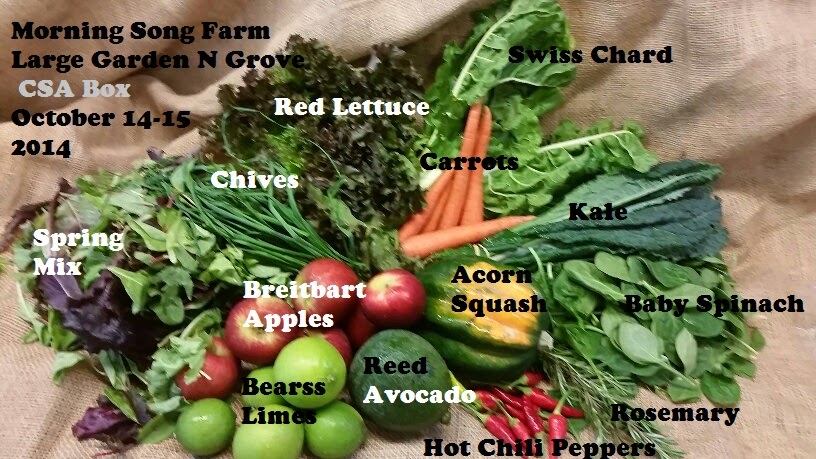(NaturalNews) The end of September marked three straight years of severe drought for California, with the state receiving less than 60 percent of its average precipitation.
The lack of rainfall has resulted in immense suffering throughout the state, leaving low reservoirs, fallowed farmland, rising unemployment and complete drying up of some people’s wells.
It’s true that water is the essence of life. All things living depend on it, and without it the world around us would be nonexistent, however, what many of us don’t realize is that California’s drought could soon be hitting your pantry and if not this year, next year for sure.
With the arrival of the 2014 harvest season, not only the United States, but also the world, could soon feel the aftermath of the state’s continued drought.
California is considered our nation’s agricultural powerhouse, yielding a third of all produce grown in the U.S.
Central Valley, which consists of two valleys: the San Joaquin to the south and Sacramento to the north, spans 450 miles, a region that is home to the world’s largest patch of Class 1 soil, the best soil there is, according to The New York Times.
With nearly 300 days of sunshine, the perfect variance in temperature, cool coastal fog and an extended growing season, allows the state to produce a vast range of fruits, vegetables and nuts.
California is responsible for producing 99 percent of the country’s walnuts, 97 percent of kiwis, 97 percent of plums, 95 percent of celery, 95 percent of garlic, 89 percent of cauliflower, 71 percent of spinach, 69 percent of carrots and many other foods Americans store in their kitchens.
Unlike the Midwest, which mainly produces corn and soybeans, the Golden State yields around 400 different types of food, generating 73 percent of the state’s agricultural revenues from crops, with the remaining 27 percent made by livestock commodities, according to Western Farm Press.
Due to lack of rainfall, an estimated 42,000 acres of farmland, or about 5 percent, went unplanted this year, causing the state’s agri revenue to take a $2.2 billion dollar hit.
5 percent of Californian’s farmland went unplanted this year
Fortunately for farmers, increased food prices offered a little cushion to help make up for crops that couldn’t be watered due to this year’s restrictions. If the winter fails to bring adequate rainfall to help replenish low rivers and streams, and “overtaxed groundwater,” the situation could get much worse, farmers say.
“Nobody has any idea how disastrous it’s going to be,” said Mike Wade of Modesto, with the California Farm Water Coalition. “Is it going to create more fallowed land? Absolutely,” he added.
“Is it going to create more groundwater problems? Absolutely. Another dry year, we don’t know what the result is going to be, but it’s not going to be good.”
The drought’s affect on the 2014 harvest is pronounced, with 140,000 acres of rice fields left unplanted, reported the Sacramento Bee. The Sacramento Valley rice crop, an export that serves sushi joints worldwide, has already dropped by 25 percent this year.
Corn production in the state is down an estimated 45 percent, along with cotton declining 23 percent, and oranges 4 percent. Also wine, a California staple, could see price increases due to a 9 percent decrease in grape production, a number farmers say could be much higher in 2015 if rain doesn’t come.
Farmers forced to neglect other crops in order to water the most demanding crops, still doesn’t always end happily. Despite many growers only focusing on almonds, yield still declined, falling to 1.9 billion pounds down from 2.1 billion pounds.
“I’m very nervous about water,” said Ledbetter, a wine grower in Sonoma County. “If we don’t have a rainy winter, I can pretty much guarantee we’re all going to be receiving curtailment notices. If that happens, we’re going to be concerned about keeping the vine alive rather than harvesting it.”
Sources:
www.sacbee.com
http://www.nytimes.com
http://westernfarmpress.com
http://www.motherjones.com
http://water.ca.gov
Learn more: http://www.naturalnews.com/047327_drought_crop_harvest_California.html#ixzz3GirpN3ce







 asty, tiny black seeds are NOT bugs. Two kinds of peppers, the long, bigger peppers are sweet, and the jalapanos are, of course, hot. If you’re new to the Reed Avocado, it ripens a little bit differently than your typical grocery store Hass avocado. It’s still taking around a week after harvest to be ready to eat, but because as the fruit ripens the flesh contracts slightly, you might squeeze the fruit and think it’s gone bad. That “squish” isn’t fruit, it’s airspace. I love the Reeds, I think they have the nuttiest, smoothest flavor of all the different varieties we grow. They’re not favored by grocery store chains because of their size and weird ripening characteristic.
asty, tiny black seeds are NOT bugs. Two kinds of peppers, the long, bigger peppers are sweet, and the jalapanos are, of course, hot. If you’re new to the Reed Avocado, it ripens a little bit differently than your typical grocery store Hass avocado. It’s still taking around a week after harvest to be ready to eat, but because as the fruit ripens the flesh contracts slightly, you might squeeze the fruit and think it’s gone bad. That “squish” isn’t fruit, it’s airspace. I love the Reeds, I think they have the nuttiest, smoothest flavor of all the different varieties we grow. They’re not favored by grocery store chains because of their size and weird ripening characteristic.

 m for our beginning cheese making class. We’ll focus August’s class on a few of the fun and easy cheeses that will easily turn you into a cheese maker! Impress your friends with cheesey offerings and try out a fun and different hobby that brings dividends of appreciation. You may find that you’ll discover a passion for cheese as we have here at Morning Song Farm. It’s easier than you’d ever think! Follow along with handouts and easy to follow recipes so that your success is insured when you repeat the steps at home. We’ll talk about which milk to use, cultures, and why certified organic milk isn’t your best choice. We’ll make three different cheeses; Garlic Ricotta, Herbed Queso Fresco, Fromage Blanc, Paneer, Feta and Neufchatel cream cheese are among those we choose to make and sample during the class. Class starts at 10:00. Arrive 15 minutes early if you’d like, to sample herbed cheeses as well as our just churned butter with breads and muffins and coffee, while meeting your fellow cheese loving adventurers! Get a chance to meet the farm’s beautiful Nigerian dairy goats, and pet our friendly herd. Bring a crunchy granola bar or two and you’ll be everyone’s best friend, especially Carl The Herd Leader who eats anything but really gets excited if it’s crunchy.
m for our beginning cheese making class. We’ll focus August’s class on a few of the fun and easy cheeses that will easily turn you into a cheese maker! Impress your friends with cheesey offerings and try out a fun and different hobby that brings dividends of appreciation. You may find that you’ll discover a passion for cheese as we have here at Morning Song Farm. It’s easier than you’d ever think! Follow along with handouts and easy to follow recipes so that your success is insured when you repeat the steps at home. We’ll talk about which milk to use, cultures, and why certified organic milk isn’t your best choice. We’ll make three different cheeses; Garlic Ricotta, Herbed Queso Fresco, Fromage Blanc, Paneer, Feta and Neufchatel cream cheese are among those we choose to make and sample during the class. Class starts at 10:00. Arrive 15 minutes early if you’d like, to sample herbed cheeses as well as our just churned butter with breads and muffins and coffee, while meeting your fellow cheese loving adventurers! Get a chance to meet the farm’s beautiful Nigerian dairy goats, and pet our friendly herd. Bring a crunchy granola bar or two and you’ll be everyone’s best friend, especially Carl The Herd Leader who eats anything but really gets excited if it’s crunchy.